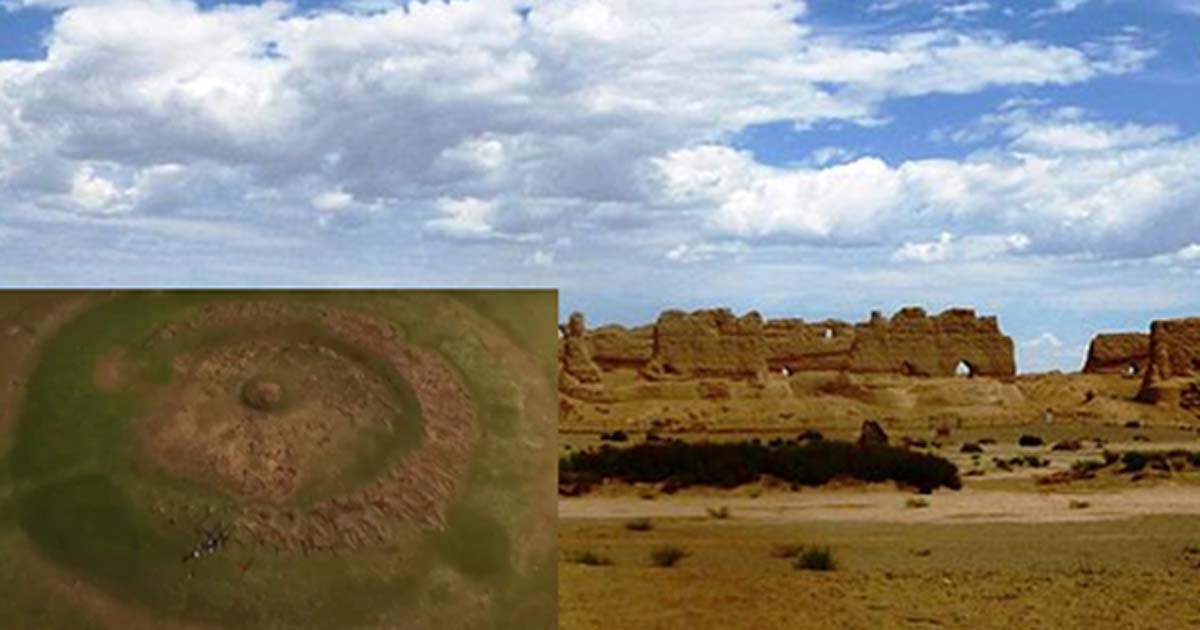3000-Year-Old Earthworks Confirmed as Sun Worship Altar on China’s Silk Road
Archaeologists have discovered the remains of a 3,000-year-old altar to the sun in North West China’s Xinjiang Uygur Autonomous Region. Experts say that the altar resembles the heaven-worshipping altars of the dynasties that once ruled China’s central plains.
Unearthing the Bronze Age Altar
Discovered in China's far northwest, the ruins show a strong cultural connection existed between the region's east and west even before the Silk Road. The 3,000-year-old altar dedicated to sun worship was initially discovered in 1993, but organized archaeological excavations would only launch 23 years later in 2016. The excavations have now revealed that the structure has noticeable similarities to the heaven-worshipping altars previously only seen much farther west on the Eurasian plains, as RT reports. The altar sits along the path of the Silk Road, an ancient network of trade routes that connected Asia and Europe.
The Silk Road’s Legacy
As reported in a previous Ancient Origins article, the Silk Road extended from China to the Mediterranean, acting as a trade route for goods including silk and spices, as well as cultures, beliefs, and ideas. Determining the exact geographic scope of the Silk Road has always been a challenge for historians.
- Sacrificial altar uncovered in ancient Neolithic city in China
- The Legend of Leizu and the Origins of Luxurious Chinese Silk

Caravan on the Silk Road, 1380. (Public Domain)
It was established during the Han Dynasty of China, between the 2nd century BC and the 14th century AD. Zhang Qian of the Western Han Dynasty created the initial route, and additional routes were added over time throughout the Han Dynasty. The Silk Road reached its peak during the Tang Dynasty, as society and the economy flourished, but its decline came during the Yuan Dynasty.
According to UNESCO, the Silk Road linked China with the Roman Empire, allowing trading of goods between the ancient cultures of China, India, Persia, Arabia, Greece, and Rome. However, more than goods were moved and traded along the Silk Road. It was utilized by various peoples and cultures, and as they traveled along the Silk Road to trade goods, they were also sharing knowledge, ideas, cultures, and beliefs. These exchanges along the Silk Road have been credited with enhancing science, arts, literature, crafts, and technologies among the ancient civilizations. Essentially, as they traveled and traded each culture was unknowingly impacting and molding the other cultures within which it came into contact.

A blue-eyed Central Asian monk teaching an East-Asian monk, Bezeklik, Turfan, eastern Tarim Basin, China, 9th century. (Public Domain)
While “Silk Road” is a well-known name for the trade routes today, it is not a name that was used by those who traveled and traded on the routes. In 1877, German geographer Ferdinand von Richthofen named the trade route the “Silk Road” because silk was the main good that was traded along it.
The Altar’s Cultural Significance
Despite being more than 3,000 years old, the main structure of the Bronze Age altar is in remarkable condition. The altar is constructed from circular layers of cobbles and mud, and it has three different stone layers. Experts agree that the find is important from an archaeological point of view because it clearly shows a strong cultural link between nomadic regions and ancient Chinese ruling dynasties.
- 100 Merchants Retrace Silk Road Trade Route on Camelback in Epic Year-Long Journey
- Like Father, like Son: Altar shows heroic son of Hercules slaying a many-headed Hydra

Aerial view of the altar in Xinjiang, China. (euronews)
"This proves that central plain culture had already long reached the foot of Mount Tianshan, in the Bayanbulak Grassland, the choke point of the Silk Road," Liu Chuanming, one of the archaeologists studying the ruins said in a CCTV video. Archaeologist Wu Xinhua also commented, "Since ancient times all civilizations on the continent of Eurasia used circle shapes to represent the sun. Mongolian yurts have the same structure as the altar," pointing out that sun worship was a common practice among many cultures that existed during that period.
Archaeologists will continue excavating the sun altar in Xinjiang to discover more valuable information about the rich history of the cultures that were located along the ancient Silk Road.
Top Image: Han Dynasty granary between Dunhuang and the Jade Gate - an important supply center for the ancient Silk Routes. (John Hill/CC BY SA 3.0) Insert: (Chinatimes / YouTube Screenshot)

















